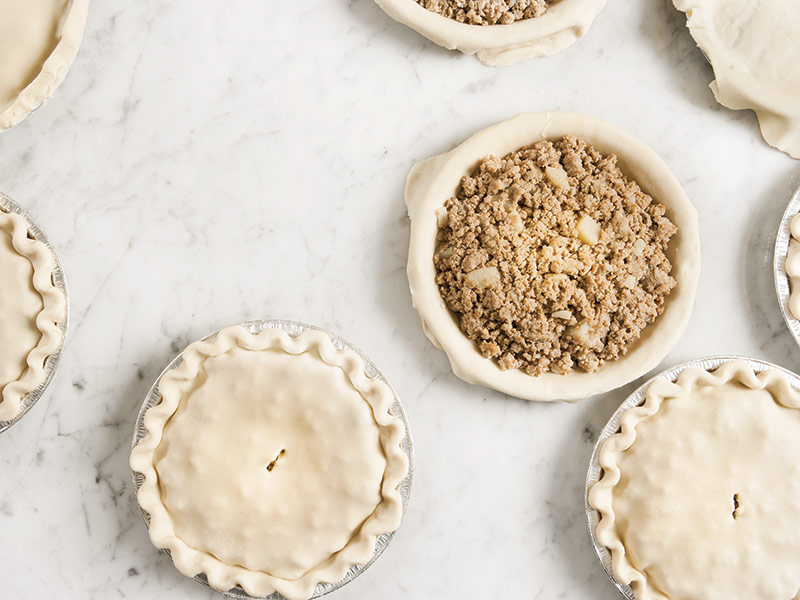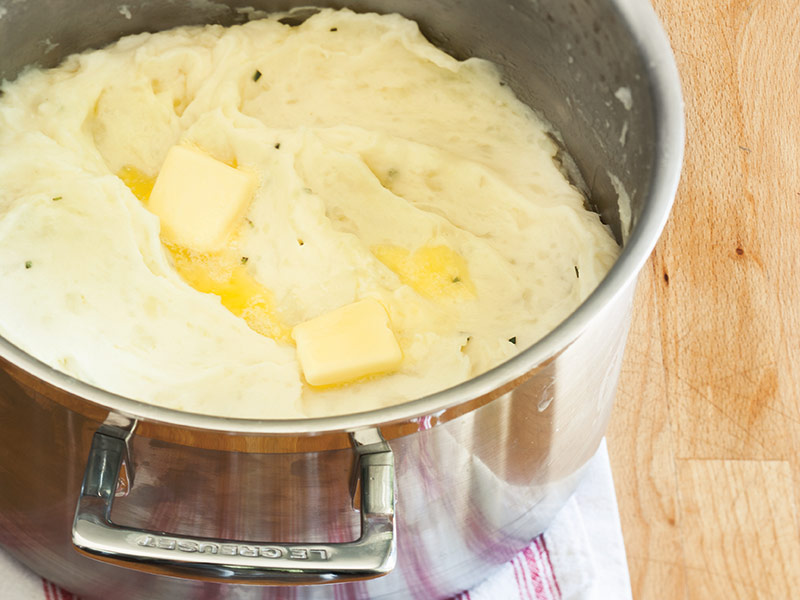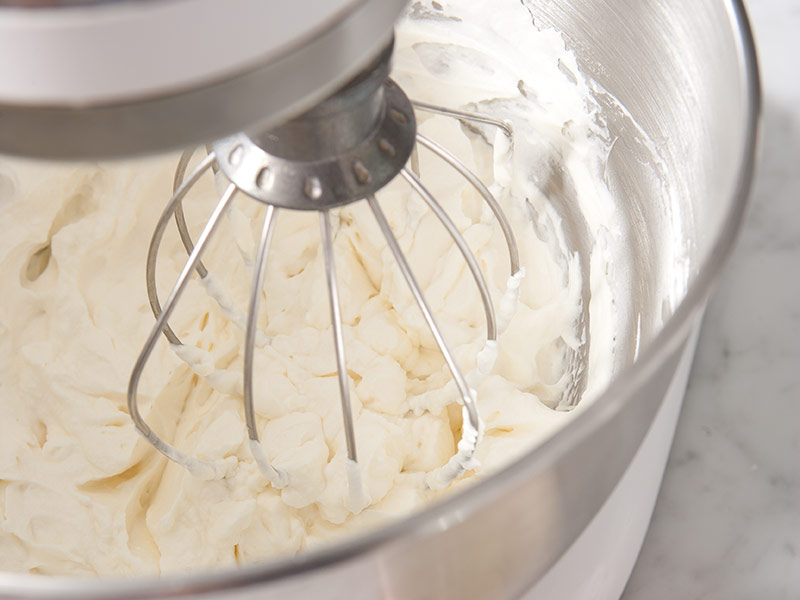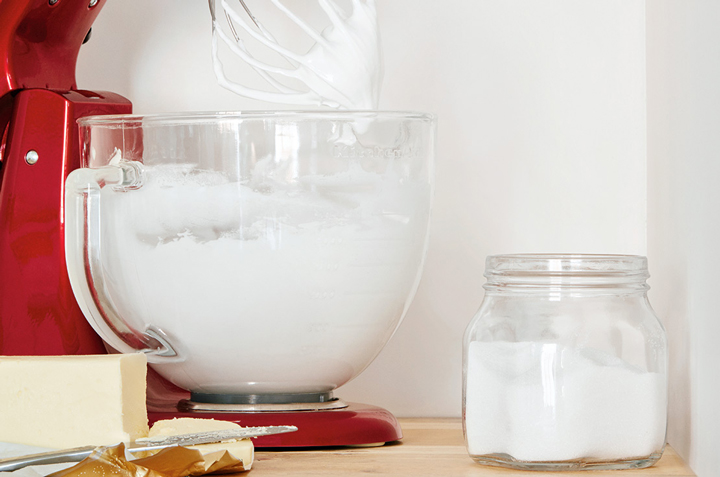Turkey and mashed potatoes

1 › How do I avoid soggy pie crusts?
Use glass or dark metal pie plates instead of disposable aluminum ones. They transfer heat better.
Place a dark baking sheet or, even better, a pizza stone on the bottom rack while you’re preheating the oven. Place the pies directly on the sheet or stone and cook as usual. Success guaranteed!
2 › Can I cook a turkey roast in the slow cooker?
Absolutely! For guaranteed delicious results, try our Orange and Honey Turkey Breast recipe. However, if you’d like to slow cook a different type of turkey roast, the amount of liquid required will likely vary. To make sure your proportions are correct, we recommend good old trial and error…ideally long before your guests show up.
3 › My turkey roast weighs double what the recipe calls for. Can I adjust?
Of course, if it’s a recipe for the oven, but not if it calls for the slow cooker. That said, don’t make the mistake of doubling the oven time! Cooking times will increase, but only about half an hour more on average. The most important factor is the meat’s internal temperature.
4 › Is my turkey done?
To check for doneness, nothing beats a meat thermometer. Your turkey is done when it reaches a temperature reading of 180°F (82°C) in the inside of the thigh and at least 165°F (74°C) in the breast and stuffing.
5 › Can I cook a turkey ahead of time?
You can definitely cook a whole, unstuffed turkey ahead of time. De-bone it immediately and save its cooking juices, which you’ll use to reheat the meat to keep it moist. We don’t recommend precooking a turkey roast. A stuffed turkey won’t work either, unless you carve it immediately after cooking.
6 › I’m hosting 25 people for dinner. How big should my bird be?
Depending on individual appetites and the menu as a whole, a safe bet is between 5 and 10 oz (150 and 300 g) of turkey per portion. Multiply this by the number of guests, then double it to account for the weight of the bones. For example, to feed a 7-oz (200 g) portion to 25 people, you will need a 22-lb (10 kg) turkey.
7 › What should I do if my gravy is too thin?
Combine about ¼ cup (35 g) of all-purpose flour or cornstarch with ⅓ cup (75 ml) of water and stir until you get a smooth slurry (a semi-liquid mixture). Whisk a bit of the slurry into your gravy, stirring constantly. The gravy will thicken when it comes to a boil. Gradually add more slurry until the desired thickness is achieved (you might not need it all).
8 › Can I multiply a slow cooker recipe?
Yes, as long as you keep two things in mind: First, you should never fill a slow cooker to the brim (three-quarters full is the maximum). Next, don’t double the cooking time; just add an hour. That’s all!

9 › Help! My mashed potatoes have turned to glue.
Potatoes can turn sticky when they’re overworked, which is especially likely if you’ve used a mixer or food processor to purée them. Unfortunately, they can’t be saved (unless you turn them into croquettes or doughnuts: See ricardocuisine.com for recipes). Our two favourite types of potatoes for mashing are russet and Yukon Gold: They break easily and won’t go gummy quite as quickly. Be sure to mash them with a potato masher.

10 › How long does whipped cream keep?
Whipped cream can be kept refrigerated in a covered bowl for several hours. If whey separates at the bottom of the bowl, simply re-whip the cream until it is fluffy again before serving.
Pies and Cakes
11 › Where should I place my oven rack for baking cakes?
The best spot is right smack in the middle, unless you’re making angel food or chiffon cake, which are baked in tall pans and rise quite a bit. Place them on a rack one notch below the middle spot.
12 › What is the best way to prep cake pans?
For regularly shaped pans (round, square or rectangle), line the bottom with parchment paper (not wax paper, which tends to tear) and grease the sides. Pans for angel food cake, chiffon cake or genoise (sponge cake) should not be greased. For irregularly shaped pans (like Bundt pans), grease the entire pan or spray with vegetable oil, then dust with flour (or cocoa, if your cake is chocolate).
13 › How should buttercream or ganache be stored?
In an airtight container with plastic wrap or parchment paper pressed directly on top, followed by the lid. They will keep for up to two weeks in the refrigerator, or three months in the freezer. Let them reach room temperature before using.
14 › I follow recipes perfectly but my cakes come out pale and don’t rise very well. What gives?
These are telltale signs of a too-cool oven. The batter remains liquid for too long, loses its air bubbles, and doesn’t get hot enough to brown on the surface. Results: flatsville! Solution: Buy an oven thermometer and rely on its reading rather than on your oven’s built-in thermostat.
15 › Can I use salted butter instead of unsalted butter in a dessert recipe?
Not for icing or buttercream recipes, but yes for batters, pie crusts and caramels. However, if you’re using salted butter and the recipe calls for additional salt, omit it completely.
16 › Can I double a cake recipe?
t’s too risky with angel food cake, chiffon cake or genoise, but it will work well for simple butter-based cake recipes like classic chocolate or vanilla. If you double the number of same-size pans, the baking time remains the same (just be careful not to overcrowd the oven). If you switch to a larger pan, the trick is to make sure to double the pan’s area. For example, an 8-inch round pan (50 square inches) should be replaced by a pan of about 100 square inches, such as a 10-inch square pan or a 13 x 9-inch rectangular pan. That way, the depth of the batter will be the same as indicated in the original recipe. The baking time will be a little bit longer.
17 › My cake cracked. What went wrong?
- Your oven was too hot. Double-check the temperature with an oven thermometer.
- here was too much batter in the pan. Avoid filling pans to more than two-thirds capacity.
- The batter was overworked. Avoid overmixing once the flour is added.
- There was too much flour. Need to brush up on your measuring technique? Watch our how-to video.
18 › What causes the centre of a cake to fall?
Underbaking, most likely. Use the cooking time outlined in recipes as a general guide rather than a rule of thumb. To check for doneness, use a toothpick (it should come out clean), look for visual cues (the cake is golden and starting to pull away from the sides of the pan) and touch the surface (it should spring back when you press it lightly).
19 › Can I use a 9-inch pan if the recipe calls for an 8-inch pan?
Yes, but keep in mind that since the batter is less deep, it will require a bit less time to bake and the finished cake will not be as thick. How much less time? It depends on the type of cake and the volume of the batter you started with. Start checking about 10 minutes before the recipe’s recommended end time, and extend as required.
Fudge and Caramel
20 › My fudge comes out too hard. How can I soften it?
If it’s hard, cracked and crumbly, it’s because the sugar syrup was overcooked and there was not enough liquid left for a semi-soft texture. To salvage it, break the fudge up and heat it in a saucepan with 3 or 4 tbsp (45 to 60 ml) of 35% heavy cream. Bring to a boil, stirring until the sugar has completely melted. Allow the mixture to boil without stirring until a candy thermometer reads 237 to 239°F (114 to 115°C)—no more! Then proceed with the recipe as usual.
21 › How do I firm up soft fudge?
It likely wasn’t cooked to a high enough temperature to concentrate the sugar. Return the mixture to the saucepan with about 2 tbsp (30 ml) of 35% heavy cream and bring to a boil, stirring until the sugar has completely melted. Allow the mixture to boil without stirring until a candy thermometer reads 237 to 239°F (114 to 115°C), which is the temperature for perfect results. Remember that crystallization can be finicky! Arm yourself with patience and some good old elbow grease: After cooling the mixture, you might have to stir for 10 to 15 minutes before the fudge starts to set.

22 › How long does homemade caramel sauce last and how should it be stored?
On average, homemade caramel sauce will keep for about three weeks in the refrigerator or one week at room temperature. If mould appears on the surface, or it’s showing signs of fermentation, toss it.


